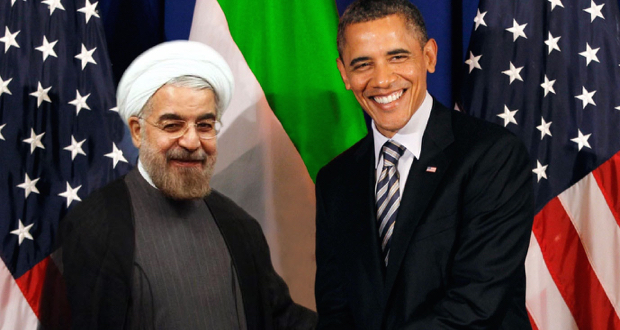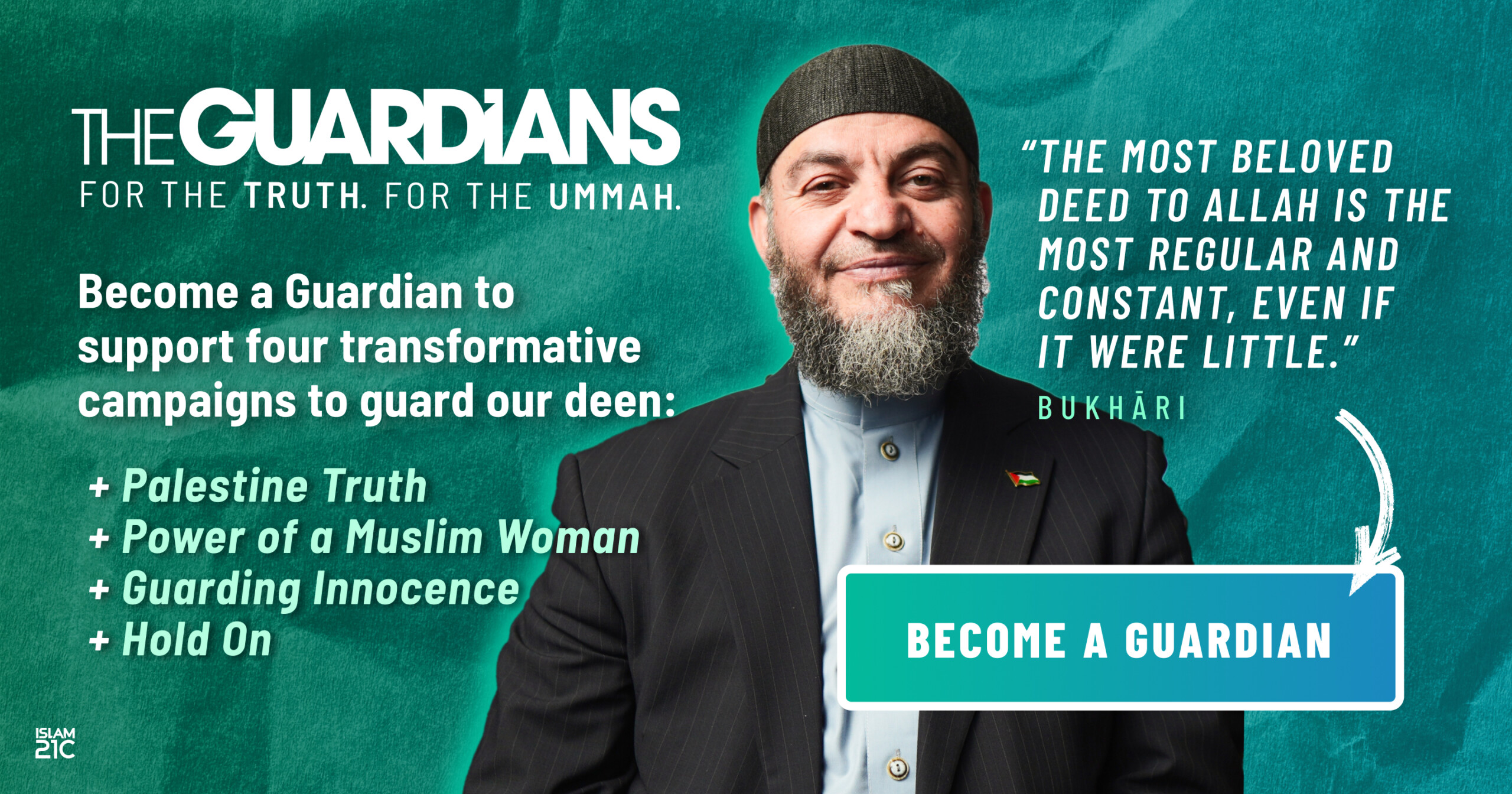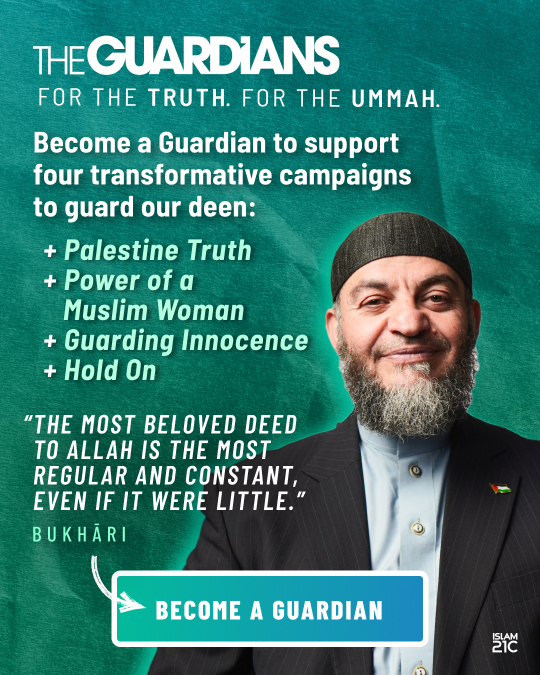Hand in hand against Sunnis? US-Iran coalition uncovered
The 11th of September attacks formed a turning point in the relationship between the US and the Arab world, particularly towards Saudi Arabia, its once key ally, with the latter starting to express concern over American military presence in the Beirut Arab summit of January 2002,[1] eventually triggering the US to look for alternative basis and avenues for military cooperation.
Think tanks, academics and politicians have since been demanding that a new strategy towards the Arab world be put to effect, from the perspective of ‘National Security’ utilising the existent multi-faith and multi-ideology facet in the Middle-East to its own advantage. Published research began suggesting that 61% of the inhabitants of the Arab-Gulf, from a total population of 81.3 million are followers of the Shi’ah doctrine, after considering Iran, Iraq and other countries in the ‘Gulf Cooperation Council’.[2] Research also asserted that the US’ hold on the region is better served and bolstered by strengthening the Shi’ah community such that they grasp the reins of power in each successive state due to their “sheer numbers”.[3]
The US’ strategy towards the Arab-Gulf has depended on a number of erroneous assumptions, most importantly:
1) That Shi’a comprises the majority of the inhabitants of the Arab-Gulf, which is not the case.
2) That cooperation between Shi’a organisations and the US provides the groundwork for greater coordination of policies, bringing about better security and stability for the region.
3) Despite real and fundamental differences between Iran and the US because of the former’s Nuclear programme, cooperation can still take place to serve mutual interests in the same way cooperation occurred during the US’ invasions of Iraq and Afghanistan.
4) The main dangers against the US culminate in: the presence of ‘extremist Sunni groups’, the spread of ‘Wahabist’ extremist ideologies and totalitarian kingdoms.
Thus political theorists, not least those close to the circles of US lawmakers and politicians laid out a number of stratagems to allegedly protect their declared interests in the form of recommending heavy support of governmental and administrative Shi’ah organisations. This was to be achieved by simultaneously promoting the principles of ‘transitioning power’, declaring that ‘freedoms’ will be guaranteed and watering down the influence of a ‘ruling class’ or family.
The research provided the footing for the US to improve relationships with Iran and all associated groups and factions, starting from 2002, all the way until the US declared its ‘landmark’ agreement with the Shi’ah regime surrounding its Nuclear programme in July 2015. Contrary to popular belief, the US and Iran now engage its unprecedented forms of military and strategic cooperation, far from the empty ‘death to America, death to Israel’ slogans that are spurted amongst the (possibly) oblivious masses. Here, we will present some of the wide-ranging threats and dangers this deal has created.
Improved Relationships between the US and Iran and Factions Affiliated to Iran between 2002 and 2009
The ‘Iraqi Opposition Conference’ London conference organised by Zalmay Khalilzad, the once United States Ambassador to the United Nations under President George W. Bush in December 2002 provided a turning point in security and military cooperation between the US administration and the Iraqi, Iranian-affiliated opposition forces, guised by ‘the Supreme Council for the Islamic Revolution’ and the ‘Da’wah Party’.[4] Dominated by Shias and Kurds, Iraqi ‘opposition’ leaders involved themselves in rigorous negotiations with members of the US Foreign Ministry in Chicago forming from then a cosy relationship with the administration driven by the mutual intent on overthrowing Saddam Hussein.
What further transformed the Middle-East was the US’ invasion of Iraq in 2003, adopting the notorious notion of ‘divide and conquer’ and dividing the once politically homogeneous state into Sunnis, Shia’s and Kurds. The US, however, spilt its efforts into empowering the second of these groups, whilst simultaneously obliterating the only army able to deter the Iranian influx into the Arab world. Its oil interests in the region were now better served by siding with another force (as opposed to historically siding with Saddam), and thus a new era was drawn.
Between 2003-2007, the US assumed a ‘pro-democratic’ policy in the Middle-East, carrying out extensive training courses, lectures and interactive sessions targeted at the Shia opposition groups in the Arabian gulf and in particular Iraq,[5] in turn, dwindling the presence and effectiveness of Sunni opposition groups that naturally exercised a huge deal of precaution in the face of this policy since it was laid out by an occupying force.
From 2007, the growing concern of Arab countries from the growing trend of Iranian influence started to become apparent.[6] Arab leaders, including those of Jordan, Egypt, Saudi Arabia and Bahrain started to explicitly speak of this apprehension. The US’ response was to shove these concerns under the carpet, claiming that they were exaggerations unsupported by substantial evidence.
Between ever sweetening relationships, George W Bush raised the US’ diplomatic relationship with Iran in 2008,[7] engaging in indirect talks that were welcomed by Ahmadenejad, the Iranian President at the time. Before long, Swiss Newspaper ‘Le Temps’ reported direct, secret negotiations taking place between representatives from the White House and Iran in Geneva between 2003-2009, with the intention of ‘building bridges’ and part of an initiative named ‘Track 2’, inspired by the historic Oslo Accords.[8] [9] This phase was to outline a new era of unprecedented coordination; the final sitting, conducted in March 2009 during the presidency of Barak Obama.
The Preliminary Obama Period, and the Policy of Nudging Closer to Iran – 2009-2012
The relationship between the US and Iran developed particularly during the presidency of Barak Obama, with Robert Gates, former US Secretary of Defence affirming that direct negotiations should take place with Iran for the purpose of improving the security situation in the region, calling further sanctions a “terrible mistake” and “strategic error”.[10] This came at the disappointment of the Arab world who were completely excluded from the initiative.
American think-tanks were quick to adopt this trend, rushing to justify the benefits of such a policy and assisted by the active Iranian lobby in Washington. Of the most active members of this lobby is Vali Nasr who published several studies asserting that the US is behind the empowerment of Shias in the Arab world, crediting it for establishing the first Arab entity in Iraq of Shia leanings, forcing it to change its policy to further aid the interest of Shias between Lebanon and Pakistan.[11] In fact, and as the coalition in Iraq and Syria between bitter Shia militias and the US coalition forces prove, the interests of the US and the Shias in the Arab world are inseparable, since the latter poses no threat against the US, rather Sunni groups such as al-Qaeda, the Taliban and so called ‘Wahabi‘ thought fashion the main danger. This compels Washington to empower Shias and ensure their protection, to the extent that the occupational forces orchestrated for Iraq to be led by a radical Shia president for the first time, providing priceless help to quell ‘extremist’ Sunnis.
In the same period, ‘Energy Bulletin’ published a study by the researcher James Leigh titled: “Shia Islam and oil geopolitics” in which he predicted increasing Shia influence on the political landscape and economic affairs of the Gulf, since Iran is the largest country in the region and is able to exert huge influence on its minorities residing in Arab Gulf states. In this research, Leigh emphasises the ever growing influence of Shia, and how their strategic positions over oil fields and in the petroleum installations of the Gulf states, form “significant influence over this whole Gulf region…and also ultimately to the world.”2 A. Bayyenat further recommended, in a research published in the Journal of Foreign Policy,[12] that the US changes its policy towards Tehran, demonstrating how the US has historically collaborated with Iran with favourable results for both nations, such as in 2001 to overthrow the Taliban and in 2003 to depose Saddam Hussein. He further added that a joint policy of continuous ‘low-level diplomatic engagement’ will coordinate the interests of each nation.
The notorious RAND Institute also published a study calling for the US to recognize the failure of its economic sanctions on Iran that sought to halt its nuclear program, urging the US administration to adopt a new policy whereby “positive incentives could be used to dissuade Iran from nuclear weaponization” and easing the economic grip and sanctions to achieve the same objective. In exchange for this anticipated truce with Tehran; a number of officials in Washington have called for the adoption of a more hard-line policy toward Riyadh. Wall Street Journal published an article expressing its administration’s concern of Saudi Arabia’s military and diplomatic stance against Tehran as it has began to contravene Washington’s coordination and shared interests with Iran.[13]
During the outbreak of popular protests in certain Arab countries in 2011; many features of this stark American-Iranian cooperation with the Shia opposition unfolded. This manifested through various types of support, including training and financial support received by radical elements of the opposition groups through ‘pro-democracy’ institutions in particular the Middle East Policies Initiative (MEPI), the National Democratic Institute (NDI)[14], which helped organise, alongside the United States Initiative for Peace (USIP), a hostile campaign against various Arab Gulf states in 2011.
Obama’s Second Administration and moving Negotiations into the Open Phase – (2013-2015)
The second of Obama’s administrations was marked by a transition from what is known as ‘Low-Level Diplomacy’ to open cooperation with the Iranian regime, particularly with regards to the Syrian and Iraqi crises, with the US now undeniably removing from its agenda any military action. The RAND institute published a report on behalf of the US Air Force titled: “Iran’s Nuclear Future: Critical U.S. Policy Choices” that outlined the US’ changing approach to containing Iran, [15] implicitly admitting to the failure of economic sanctions in halting the latter’s nuclear programme. The strongest boost to bilateral relations occurred when Hassan Rouhani became President of Iran on the 3rd of August 2013. In his inauguration, he set clear ambitions to the effect of drawing closer to Washington.[16] Obama was quick to reply to this by conditioning that Rouhani send a pledge that Iran does not aspire to developing a nuclear weapon, ahead of direct negotiations.
Meanwhile, Foreign Minister Mohammad Javad Zarif assumed the pivotal role of promoting this diplomatic effort, supported by his strong relations with US officials whilst a delegate for Iran in the United Nations since 1982, before holding the position of Deputy Iranian Foreign Minister in the period from 1992 to 2002.
During this period, the transformation of US Foreign Policy towards Iran became ever more apparent, particularly with the repeated requests that Iran and Hezbollah should help play an active role in curbing the Syrian conflict that they had extensively involved themselves in. Sources also revealed secret negotiations occurring between representatives of US intelligence agencies and members of Hezbollah in Cyprus, focusing on combating ‘Sunni extremist groups’, adding that Hezbollah may be considered a useful tool to combating the US’ joint ‘Jihadi‘ adversaries.[17]
In 2014, US-Iranian security and military cooperation began to take multiple dimensions. This can be summarized in the following:
- Diplomatic Cooperation
Tehran has been working tirelessly to establish itself as the dominant force in Baghdad, Damascus, Beirut, and Sanaa, and has indicated its willingness to expand its regional influence. US diplomats have been keen to highlight Iran’s role in opposing ISIS and its success in convincing the Assad regime to discard its chemical weapons. Iran is now treated as a potential ally in its battle against so called ‘extremist Salafi Sunni ideology’, albeit an uncomfortable one.
- Military Collaboration
There has been a sharp rise in American military equipment appearing in the hands of some of the most lawless Shia militias, originally intended for Iraq’s crippled army. Despite senior US officials entirely aware of this, and of the human-rights horrors perpetrated by these Iranian-backed militias, billions of dollars in military assistance continues to be sent.[18] The US Ministry of Defence confirmed that they had handed the Iraqi Army 10,000 M16 guns and other battle equipment[19] nearing the value of $18M in just the last week of February 2015.
- Nuclear Agreement July 2015
Despite widespread Western celebration at this latest nuclear agreement, the reality is that it openly acknowledges and welcomes Iran as a nuclear power. Without doubt, this deal will strengthen Iran financially and with the lifting of economic sanctions, Iran has been given the licence to trade in the open market. This agreement does not, however, stop Iran from possessing nuclear weapons or manufacturing them. Rather it enforces some restrictions about the weapons it currently holds and even these will be renegotiated again in five years.
Yet aside from whatever Iran is intending to curb of its nuclear programme, Michael Eisenstadt, the Director, and Military and Security Studies Program at the Washington institute, in a report speaks of the dangers of legitimising the Iran’s missile weapon program. Eisenstadt points to Iran’s ownership of over 800 medium range short ballistic missiles, as well as single stage missiles which run on liquid fuel, such as the ‘Shehab 1’ rocket, (each with a range of 300km), Shehab 2 with a range of 500km, ‘Qiyam’ (with a range of 750-500 km), ‘Shihab 3 (1300-1000 km), Qadar (2000-1500 km). All of these are all more or less able to strike any target in the Arabian Gulf. With its tinkering with Yemen, its fully fledged army, deployed in Syria in the form of Hezbollah and revolutionary guards, some engaged in unspeakable atrocities against the Sunni populations and its siding with the multi-nation coalition, alongside gangs and militias in Iraq to quell any Sunni opposition, who knows where its new romantic voyage with the US will take it next. And if all this occurred with it under crippling sanctions, what can we expect now that they have been lifted.
Options for Countries in the Arabian Gulf
Taking into account these incredible changes overshadowing the region, rather the whole world, countries in the gulf must:
1) Strengthen their internal fronts, guaranteeing better social justice, political representation and addressing the many problems of the youth. Sectarian groups always find openings into civil society through the door of ‘human rights’ and ‘supporting democracy’.
2) Solving inter-gulf issues, and supporting more fervently cooperation between each respective country in order to collectively challenge the dangers that loom and threaten each.
3) Establishing a regional security force, comprising all of the major Islamic countries of the word including Pakistan, Turkey and Egypt, tied by bilateral military and intelligence agreements that guarantee the security of each face shared dangers.
4) Participating militarily in Syria, Iraq and Yemen to assist those Sunni tribes standing affront the spread of Iranian imperialism and Shia militiamen. Decisive action such as this is bound to render to failure this US-Iranian coalition against Sunni Muslims, whilst draining participant forces to a cessation of their hostilities.
5) Exhausting all media resource to assist the aforementioned resistive effort through building a rhetoric that seeks to unite all parts of the society, above and beyond the separation caused by inflamed sectarian sentiments, exacerbated by Iran. It is unfortunate to see some gulf countries spending millions to quell Islamic activism, turning a blind eye to an imminent sectarian danger fuelled by the Iranian regime.
[donationbanner]
Source: www.islam21c.com
Containing research carried out by Dr Bashir Zain al-Abideen.
Notes:
[1] Kanet, R et al. “From Superpower to Besieged Global Power: Restoring World Order After the Failure of the Bush Doctrine.”
[2] http://www.resilience.org/stories/2008-12-23/shia-islam-and-oil-geopolitics
[3] Hazim, H. American Realism Revisited: Lethal Minds & Latent Threats
[4] http://news.bbc.co.uk/1/hi/world/middle_east/2576773.stm
[5] http://www.wsws.org/en/articles/2003/04/iraq-a18.html
[6] http://www.seattletimes.com/nation-world/sunnis-wont-convert-saudi-king-says/
[7] http://www.theguardian.com/world/2008/jul/16/usa.iran
[8] http://www.swissinfo.ch/eng/secret-us-iran-meetings-held-in-geneva/7325196
[9] http://www.meforum.org/2011/bush-administration-contacts-with-iran
[10] http://www.pbs.org/newshour/rundown/gates-on-iran/
[11] https://www.foreignaffairs.com/articles/iran/2006-07-01/when-shiites-rise
[12] A. Bayyenat (2011) “U.S. Policy Towards Bahrain and the Iran Factor”, Foreign Policy
[13] Matthew Rosenberg (2011) “Saudi Bid to Curb Iran Worries U.S.”, Wall Street Journal, 27th
[14] Ron Nixon (2011) “U.S. Groups Helped Nurture Arab Uprisings”, New York Times, 15th April
[15] Lynn Davis, Editor (2011) “Iran’s Nuclear Future: Critical U.S. Policy Choices”, Rand
[16] http://www.telegraph.co.uk/news/worldnews/middleeast/iran/10221401/Hassan-Rouhani-promises-new-era-in-Iran-at-inauguration.html
[17] http://www.jpost.com/Middle-East/Report-London-is-mediating-indirect-secret-talks-between-US-and-Hezbollah-333245
[18] http://www.bloombergview.com/articles/2015-01-08/iranbacked-militias-are-getting-us-weapons-in-iraq
[19] http://wreg.com/2015/02/24/isis-abducts-dozens-of-syrian-christians/









